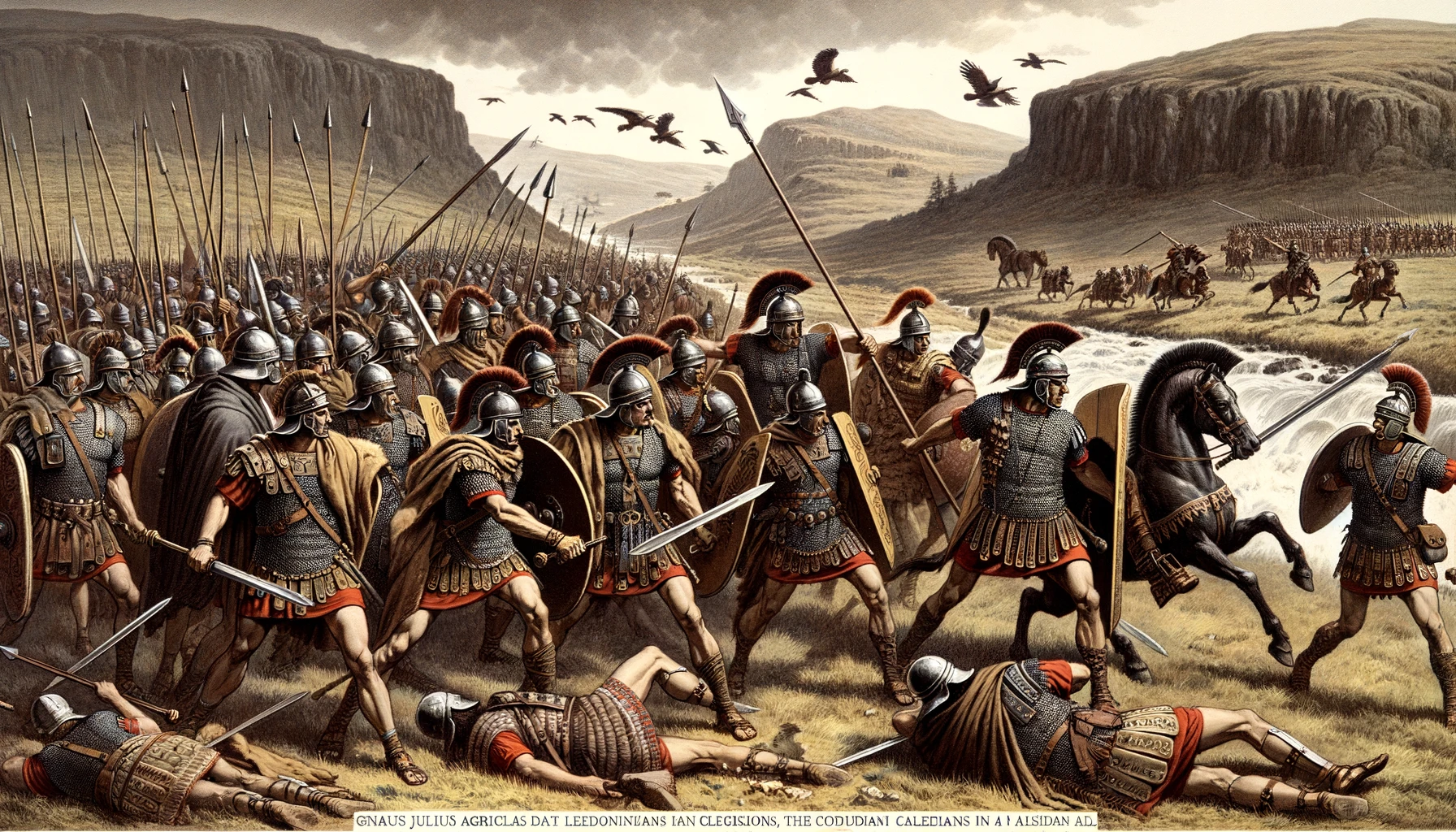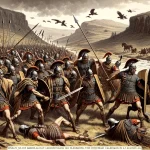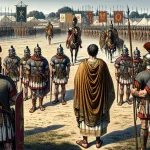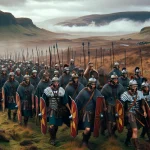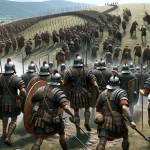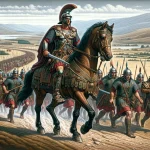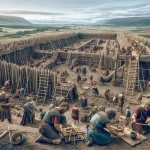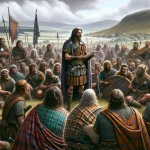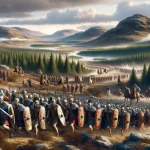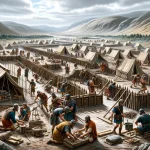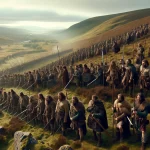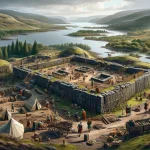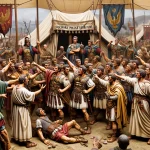Agricola, appointed as the new governor and later immortalized through his son-in-law Tacitus’s flattering biography, returned to Britain in the summer of 78.
The Conquest of Wales (77AD) – Agricola’s 1st Season
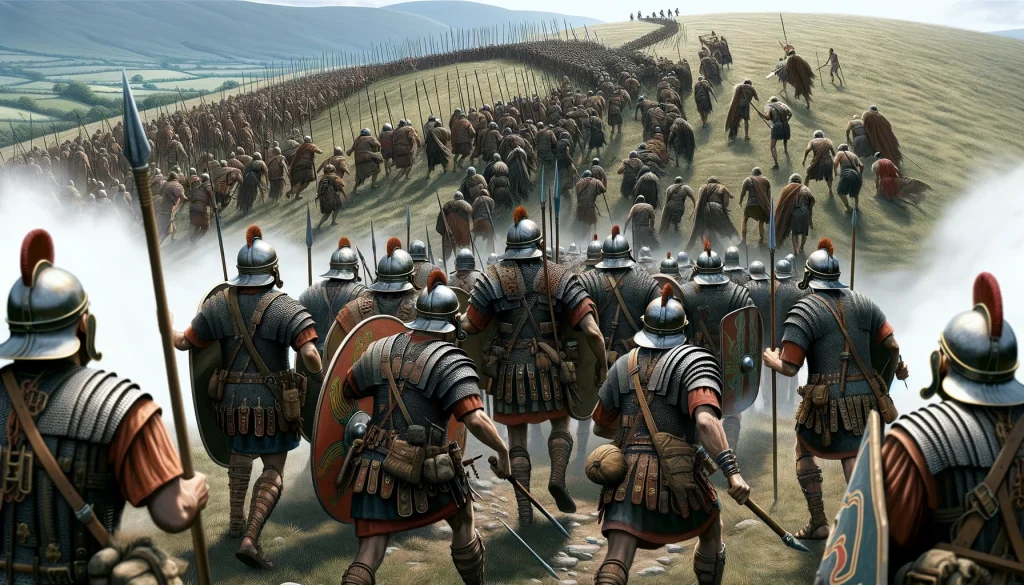
He swiftly completed the conquest of Wales by defeating the Ordovices, who had previously annihilated a Roman cavalry unit. His familiarity with the British terrain from earlier military service aided his rapid victory. Agricola then successfully invaded Anglesey, leading the inhabitants to seek peace. He then spent the winter overhauling the civil administration of the province.
The Lands of the Brigantes (78AD) – Agricola’s 2nd Season
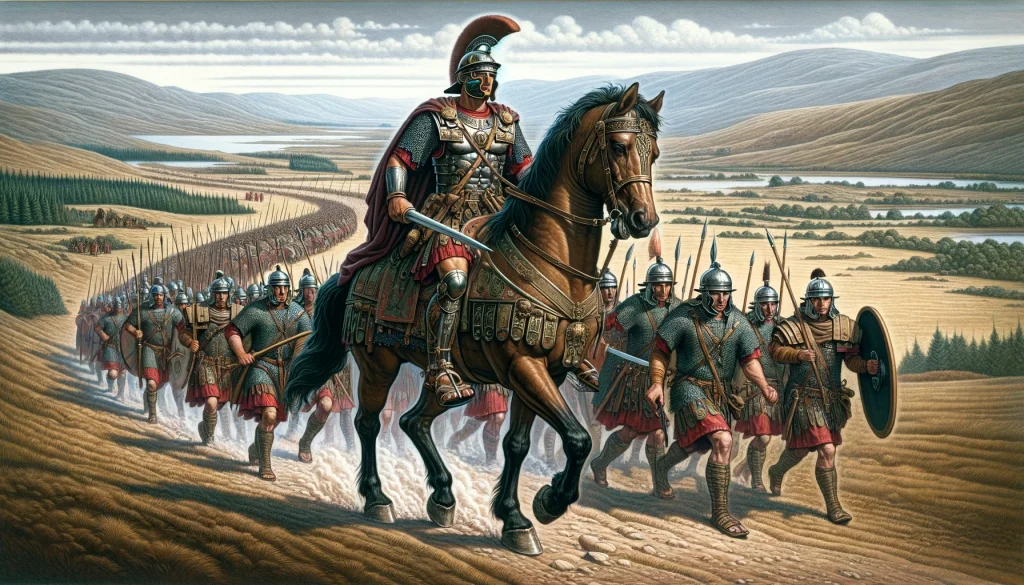
After completing the conquest of Wales, Agricola turned his attention to the north to the lands of the Brigantes and the Selgovae along Scotland’s southern coast. The Brigantes had been beaten by Cerialis five years before, but the task had been left incomplete. In 78AD the advance to the north began. Tacitus tells us that Agricola would choose the sites of the camps and reconnoitred estuaries and forests. From the road system that Agricola introduced it is thought that the plan of the campaign may have involved two parallel columns, one marching north from York and the other from Chester.
How far they penetrated during this first northern campaign we cannot say; but since they raided as far as the Tay in the following year, they probably marched far into Scotland. The Tyne-Solway isthmus was perhaps the limit of the first campaign, this was approximately the limit of the old Brigantian kingdom.
Beyond Brigantia (79AD) – Agricola’s 3rd Season
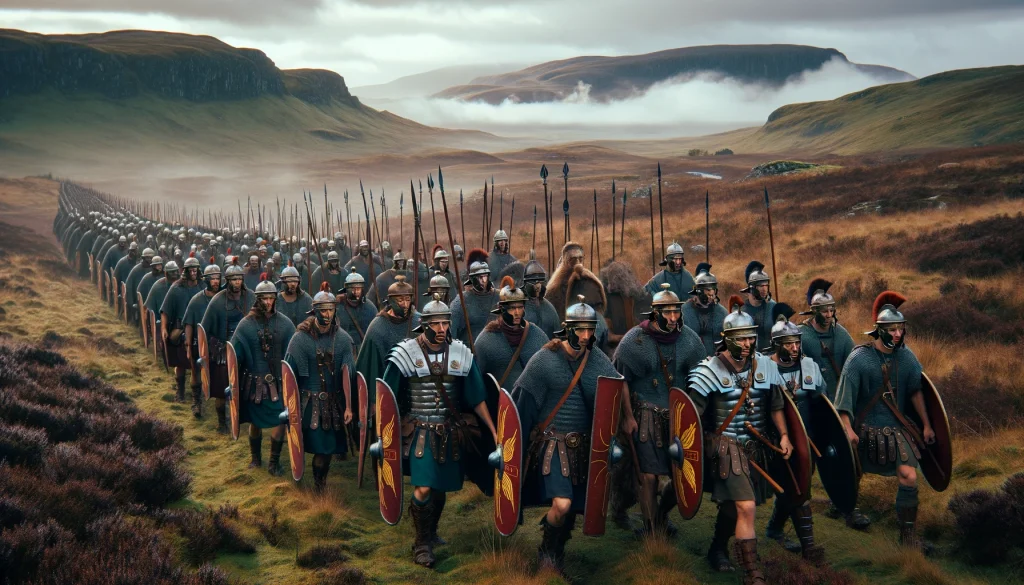
The year 79 saw the advance continue and new tribes encountered, him advancing to the Firth of Tay, though some historians suggest he halted at the Firth of Forth. Despite bad weather, enemy resistance was beaten down and once more forts were constructed so that garrisons could winter in conquered territories.
As a result of this reconnaissance to the Tay, the advantages of the Forth-Clyde isthmus as the site of the fortified frontier were appreciated: next year in 81AD forts were established along this line, and the troops were employed consolidating control over newly conquered and previously rebellious regions.
Consolidating the Lowlands – Agricola’s 4th Season (80AD)
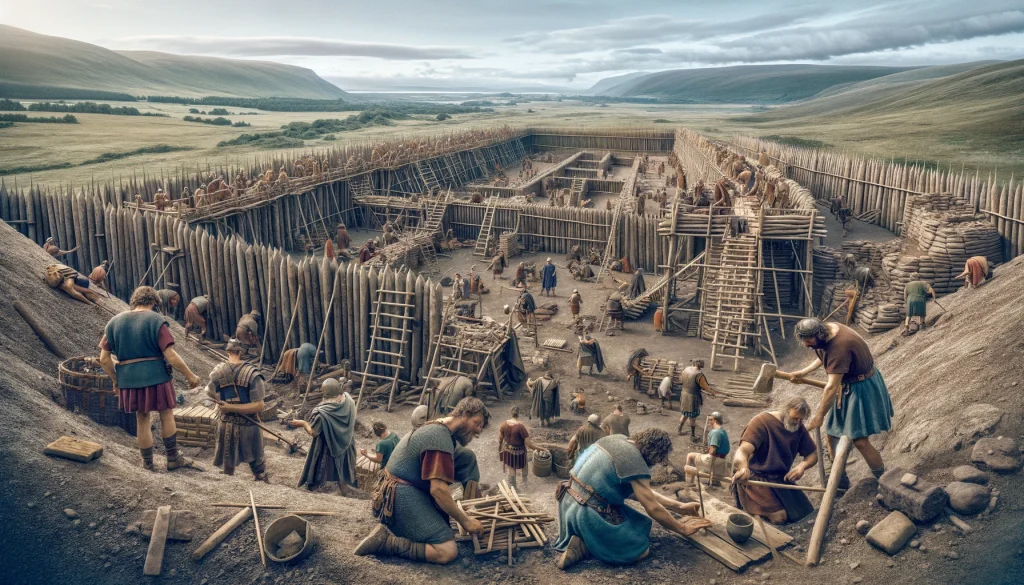
Agricola’s fourth season in Britain was a period of consolidation rather than expansion. After three years of successful campaigns, this season was dedicated to securing the territories that had been previously conquered. This strategic move was likely influenced by lessons learned from past revolts, such as the Boudiccan uprising, emphasizing the importance of establishing firm control over newly acquired lands.
During this time, Agricola’s forces likely focused on strengthening their hold over lowland Scotland. This involved the construction of fortifications and infrastructure to support the Roman military presence. The Roman forces might have also worked on improving the logistics and supply lines, which were crucial for maintaining a large occupying force far from the Roman heartland.
Lands of the Novantae – Agricola’s 5th Season (81AD)
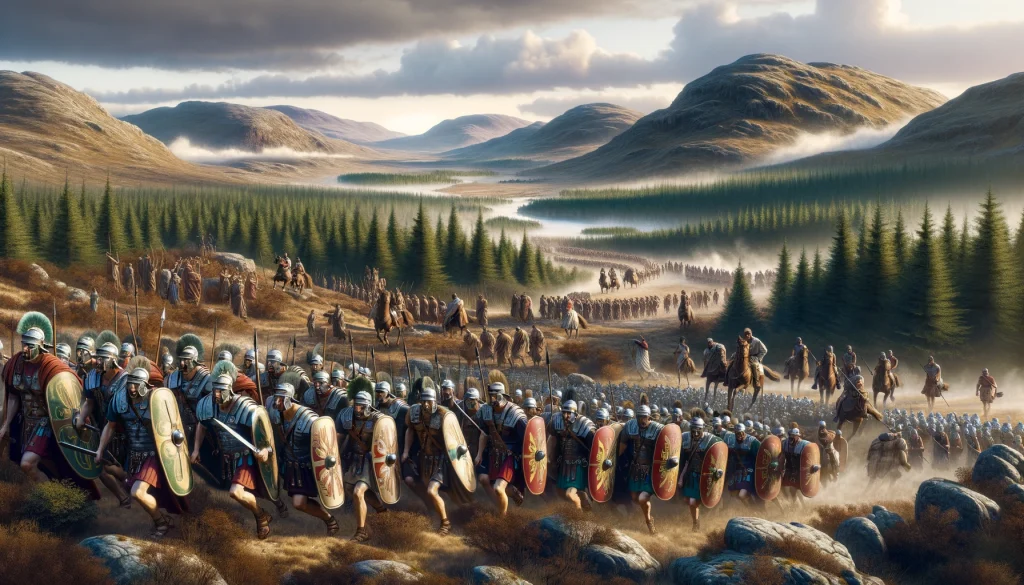
In this season, Agricola led his forces into unexplored and potentially hostile regions, subduing several previously unknown tribes through a series of successful battles. Tacitus notes that Agricola’s troops ventured into trackless areas, indicating that they were moving into more remote and less accessible parts of Scotland.
One of the notable aspects of this season was Agricola’s strategic positioning of his forces near the coast facing Ireland. Tacitus suggests that this positioning was more about demonstrating potential and preparing for future possibilities than an immediate plan to invade Ireland. It’s recorded that during this time, Agricola received one of the minor kings from Ireland who had been exiled due to a family dispute. This meeting reflects the Roman practice of engaging with local leaders, which could be advantageous for intelligence and potential alliances.
Advances into Scotland – Agricola’s 6th Season (82AD)
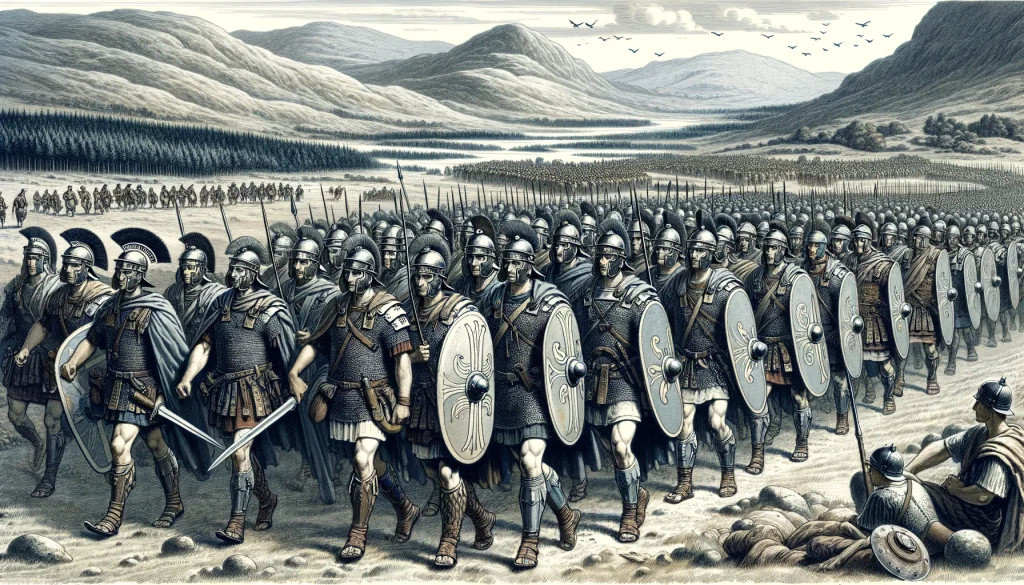
Agricola’s sixth season, which occurred around AD 82, was a significant period in his military campaign in Roman Britain. During this time, Agricola focused on consolidating Roman control over the territories north of the Forth (Bodotria). He had already reached as far as the Tay (Taus) in his third season and possibly received hostages from the Dumnonii, suggesting earlier successes in the region.
In preparation for a final push into Caledonia, Agricola’s forces likely surrounded or ‘enveloped’ Dumnonian communities in Stirlingshire and Perthshire with a series of forts. Key forts along the Strathmore road, such as those at Ardoch, Strageath, and Bertha, were strategically placed for this purpose, taking advantage of the rich resources of the Fife hinterland.
Agricola also made significant use of the Roman fleet (classis) for the first time, utilizing it for reconnaissance of harbors and supporting simultaneous land and sea operations. This integration of naval forces into his strategy marked a new phase in his military approach.
Battle of Mons Graupius – Agricola’s 7th Season (83AD)
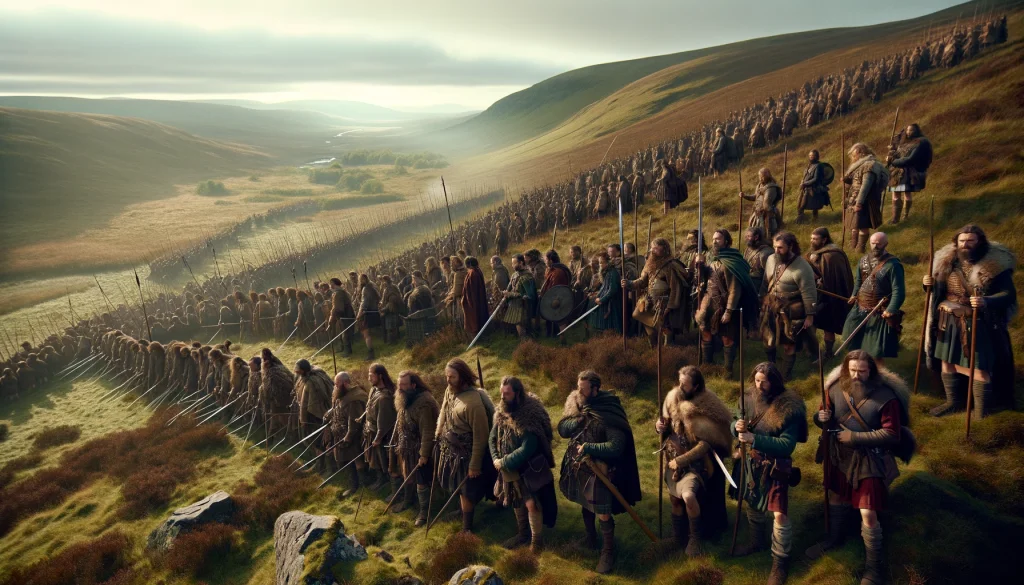
Meanwhile, the Caledonian tribes, recognizing the growing Roman threat, began to unify and mobilize for war. They gathered a large force, with Tacitus noting that alliances were invoked or renewed across Caledonia. Agricola’s presence in the north, as far as Fochabers, and the fleet’s reconnaissance up to the Moray Firth, heightened tensions and preparedness on both sides.
The culmination of these activities set the stage for the eventual Battle of Mons Graupius, where a large Caledonian force, united from various tribes, faced Agricola’s Roman army.
Following this final battle, it was proclaimed that Agricola had finally subdued all the tribes of Britain. Soon afterwards he was recalled to Rome, and his post passed to Sallustius Lucullus.
Agricola’s Successors (84–117AD)
Post-Agricola’s recall, there are no historical texts detailing the subsequent decades. The identity of his successor remains a mystery. The Inchtuthil fortress was dismantled before completion, and other Gask Ridge fortifications in Perthshire, established post-Mons Graupius to reinforce the Roman presence in Scotland, were vacated in a few years. Archaeological evidence indicates that while some Roman forts south of the Forth–Clyde isthmus were expanded and renovated, others seem to have been deserted. By 87, the frontier had been established at the Stanegate. The presence of Roman coins and pottery in native settlements in the Scottish Lowlands before 100 suggests an increasing influence of Roman culture. Key insights into this period are derived from the Vindolanda tablets in Northumberland, mostly from 90–110, revealing details about the daily functioning of a Roman fort on the empire’s border, including social activities of officers’ wives and the logistical support by merchants and military staff.
Around 105, evidence points to significant challenges from Pictish tribes: multiple Roman forts show signs of being destroyed by fire. Notably, human remains and damaged Armor found at Newstead (Trimontium) hint at conflict at this location. Additional indirect evidence includes the dispatch of auxiliary forces from Germany and a British conflict referenced on a Cyrene tribune’s gravestone. The Dacian Wars under Trajan might have caused a reduction or complete withdrawal of troops in the area, which could have led the Picts to raze the forts or the Romans themselves might have strategically destroyed them during an organized retreat to prevent enemy use. Following these events, it’s likely that the frontier shifted south to the Stanegate at the Solway–Tyne isthmus.
